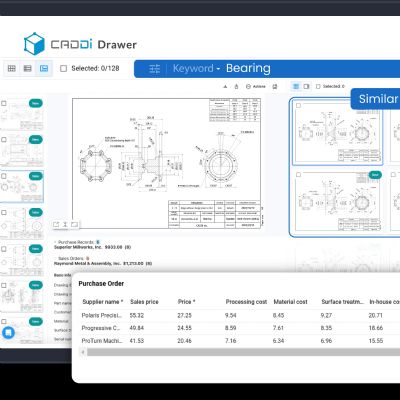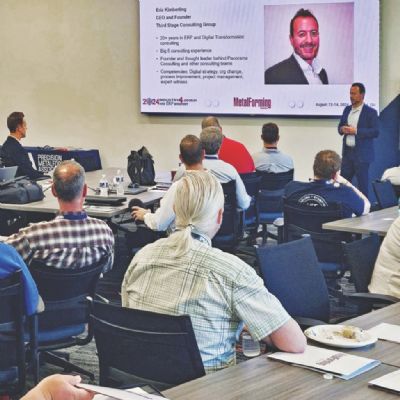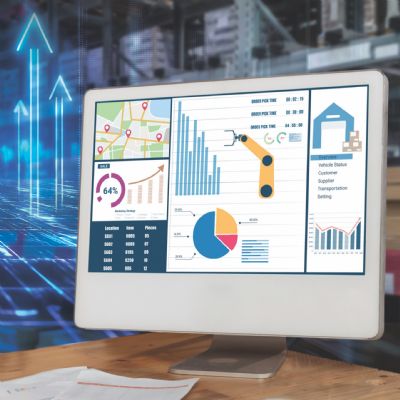3) Business process improvement should start before—not after—implementation begins.
While business process management, optimization and reengineering all encompass different activities and occur at different stages in the project, the key is to start focusing on improving business processes prior to implementation. The last thing a company should do is purchase a new ERP system and use it to “pave the cowpaths” of what your employees have als done.
On the other hand, organizations also are remiss in thinking they will throw out all of their processes and completely adopt the new ERP system right out of the box. Both approaches are flawed and typically lead to poor realization of benefits. Instead, start an implementation project by documenting current processes, and determining which processes provide competitive advantage to the organization. Those areas that are fairly rote, such as accounts payable or human resources, certainly can be adapted to off-the-shelf functionality. However, the processes that provide your company its edge must be improved and protected. It’s a long and complex undertaking, but one that will deliver the greatest long-term benefits.
4) ERP-software best practices and preconfigured solutions do not solve all of the challenges of ERP.We never recommend that an organization adopt all of the best practices touted by an ERP vendor. This homogenization will strip your organization of its unique attributes. When going through software demonstrations, remember that it’s the job of the software vendor or reseller to sell you the software, and (if you give them a fixed-bid implementation contract) then implement it as quickly as possible. Although the fastest is to shove it in out of the box, this won’t in any lessen the challenges of actually using the system to gain business benefits.
Our advice? Carefully consider all of the processes your company currently employs, should employ and will employ in the future, and assess each best practice as an option—not a foregone conclusion.5) Your project will fail without adequate organizational change management.
Sorry to be so blunt, but it’s true. Panorama has discovered that the most common cause of ERP failure is lack of strong organizational change management (OCM). If your employees, including executives, managers and end-users do not support the project, do not understand the benefits the new system can bring, and are not adequately trained, supervised or providing supervision, your organization will end up with a multimillion-dollar version of Excel.
But just as poor OCM can quickly derail a project or post-implementation system use, a strong campaign can pay dividends for years to come. We frequently are troubled to see organizations choose to cut their OCM budgets when in reality they should be investing the bulk of their time and energy into ensuring their people understand, believe in and are excited by the opportunities the software will bring.
6) If your operations and ERP system are misaligned, it’s probably not the software’s fault.
While its tempting to blame a new ERP system (or the team that implemented it) for every operational issue, the truth is that poor alignment over time results directly from not continually investing in ERP maintenance and performance improvement. ERP implementation does not end at go-live. Your company likely will change dramatically over time, and so it must develop a plan to continually assess ERP-system use, capabilities, businesses processes, new requirements and key performance indicators, and adjust or customize as needed.
7) Most ERP implementations do not properly define the finish line.
As noted, the finish line is not the day of go-live. In fact, go-live should be considered the end of only the first phase of implementation. Phase Two includes adding advanced modules, functionality and third-party additions. These steps will enhance reporting and analytics, and further improve business processes. Then, Phase Three focuses on fine-tuning business processes and achieving full functionality and superior analysis and execution capabilities.
Don’t set your team—and your organization—up to realize poor business benefits by communicating the expectation that everything will be done at go-live. Friends, the work is just beginning.
8) Most organizations strive for no customization, but most fail to do so.
I can’t count how many implementations we have been involved with that have started with the idea of no customization. After sitting through the seductive vendor sales demos, it’s what any reasonable person would expect, want and think best. But this expectation often is unrealistic and merely creates more organizational change management. Our research shows that 90 percent of organizations end up customizing their ERP software. So, enter into the project knowing that customization is likely, and knowing which processes you want to shield from these so-called “best practices.”
9) A project without executive buy-in is a project without a rudder.
Executive buy-in, commitment and support—in word as well as in deed—are mandatory components of a successful ERP implementation. The executive team does the company a great disservice if it fails to govern effectively, sit through system training, effectively allocate resources, set proper priorities, truly agree on the objectives of the implementation, and take the time to make all of the business decisions necessary to truly benefit from the system. These are your company’s leaders; they need to lead.
10) If you don’t measure it, you won’t achieve it.
The first question our consultants ask a client is, “Why do you want to implement new ERP software?” Then we ask, “How are you going to measure its effectiveness?” Establishing and monitoring key performance indicators is of the utmost importance at the corporate, business unit, departmental and individual levels. How else will you calculate ERP return on investment, or understand how effectively the system is being used, or where and how it could be leveraged better moving forward? KPIs will drive accountability, usage and, naturally, performance.
My intent here certainly is not to scare you off from an ERP implementation. I want you to implement a new system, and I want you to do it correctly. This does not mean shoving the project onto the IT department’s plate; it does not mean ignoring business practice or organizational change management; it does not mean you can give up thinking about the system after the go-live date; and it does not mean taking everything the software vendor or reseller says as the gospel truth.
An ERP implementation is a huge—and perhaps unprecedented—opportunity for your company to improve itself and the it functions. This is the time to involve everyone, to truly understand how you’re currently operating and how you want to operate in the future, and to make the changes necessary to achieve your business goals.
By offering the above advice, I am, much like a drill instructor, trying to tear down your preconceptions and beginning to build you and your team into a lean, mean ERP machine. MFTechnologies: Management







 While military recruits receive exhaustive training to ensure that they are physically and psychologically prepared for the demands of service, ERP project leads, managers and core team members are not als so lucky. Many are thrown into the battlefield of an ERP-software implementation without previous experience, with little understanding of their role or responsibilities, and often with questionable leadership support. Add to that a tight budget, a tight timeframe, high expectations and a project that affects everyone in the organization and you’re running the risk of employee desertion, operational disaster or even outright ERP-system failure.
While military recruits receive exhaustive training to ensure that they are physically and psychologically prepared for the demands of service, ERP project leads, managers and core team members are not als so lucky. Many are thrown into the battlefield of an ERP-software implementation without previous experience, with little understanding of their role or responsibilities, and often with questionable leadership support. Add to that a tight budget, a tight timeframe, high expectations and a project that affects everyone in the organization and you’re running the risk of employee desertion, operational disaster or even outright ERP-system failure.  I compare ERP implementation to performing open-heart surgery on a quarterback, on the sidelines of the season’s biggest game. A project of this magnitude can serve to revolutionize your company’s of doing business —while it continues to do business. When organizations underestimate the impact of the project, they run into problems. In fact, Panorama’s 2013 ERP Report, available online on our website, finds that 53 percent of projects cost more than expected, 61 percent take longer than expected and 60 percent fail to deliver at least half of the anticipated business benefits.
I compare ERP implementation to performing open-heart surgery on a quarterback, on the sidelines of the season’s biggest game. A project of this magnitude can serve to revolutionize your company’s of doing business —while it continues to do business. When organizations underestimate the impact of the project, they run into problems. In fact, Panorama’s 2013 ERP Report, available online on our website, finds that 53 percent of projects cost more than expected, 61 percent take longer than expected and 60 percent fail to deliver at least half of the anticipated business benefits. 

